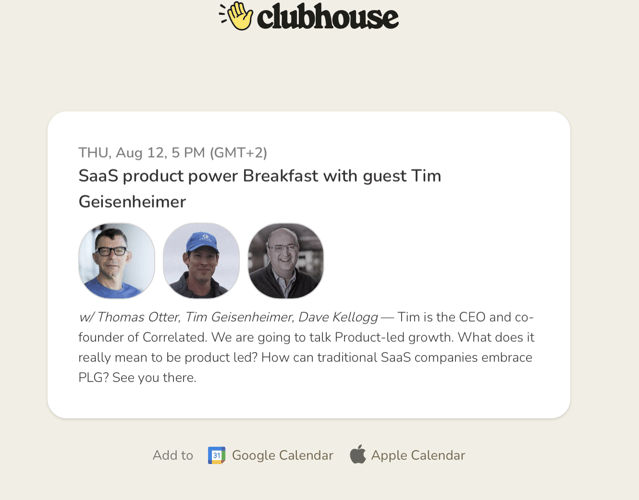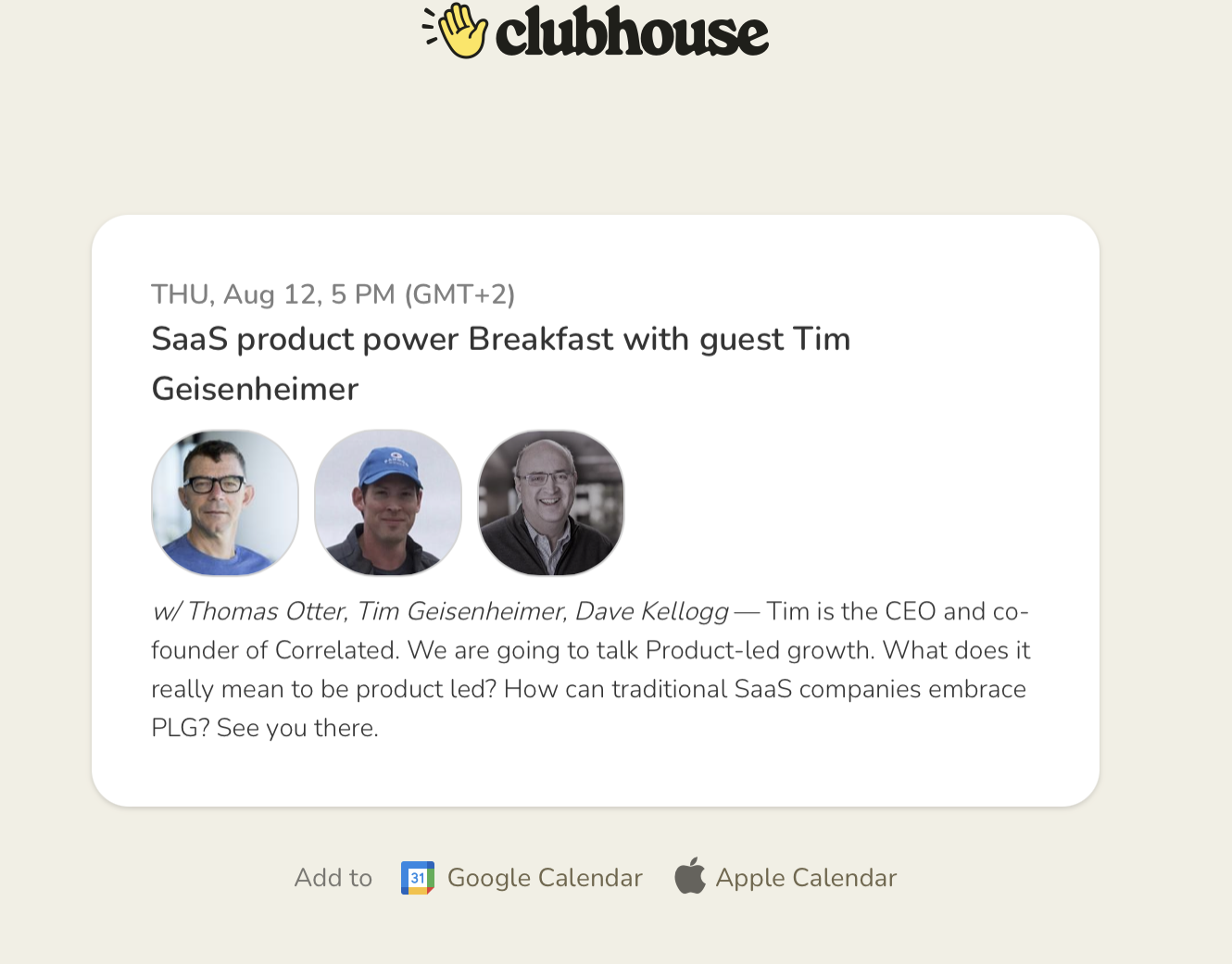HRTech
Notes on Product led growth (PLG) via SaaS Product Power Breakfast
Back in August, I interviewed Tim Geisenheimer as part of Dave Kellogg's and my regular podcast, The SaaS Product Power Breakfast. Dave was at the beach…
Tim is the CEO and Co-Founder of Correlated, a leading product-led revenue platform for sales teams. Correlated recently publicly launched and announced an $8.3 million round of funding led by Harrison Metal and NextView Ventures. Prior to founding Correlated, Tim was an early executive team member at two data and analytics startups: Facet and Timescale. Timescale recently raised a $40 million Series B from Redpoint. Earlier in his career, he was on the founding team of TapCommerce, a leading marketing tech startup that was acquired by Twitter for a reported $100 million. Tim has led sales, partnerships, and go-to-market teams throughout his career and has witnessed the transition to product-led growth as a go-to-market motion firsthand.
Product-Led Growth/Revenue (PLG) was the topic of our conversation. You can listen to the podcast in full here. In the meantime, here is a summary of Tim's perspective on PLG and the state of the industry in general:
- The SaaS industry has undergone a massive shift in terms of how companies sell SaaS products. The traditional model was quite linear (e.g., a prospect lands on a product’s website, requests more information, goes through the pre-qualification process, is then passed on to the sales team, and so on). The product-led growth (PLG) model has completely inverted the process. Buyers can set up an account and start as end-users in five minutes or less. The drive towards self-service models eliminated many points of friction that buyers used to experience and made the sales process more straightforward.
- A lot of innovation in tech is happening outside of the enterprise space. Small SaaS companies are increasingly learning how to collect and utilize data to drive sales and decisions. While the granularity and complexity of data have been increasing, the level of skills required for this data to be turned into actionable insights has been decreasing, because of better tooling.
- Modern SaaS products are API-centric. There is a shift towards higher integration and connectivity.
- While the self-service model has greatly changed the role of sales teams, it has not eliminated the role. In fact, in many instances, it made it all the more important. As SaaS adds new layers to their product (e.g., Calendly offering enterprise solutions), the need for salespeople increases.
- For self-service products, the role of a sales team has to be redefined. It’s not about whether or not they are needed. It’s about how their time should be prioritized.
- Traditionally, a SaaS buyer and a SaaS user were not the same people. However, SaaS vendors are now equipped with data on users’ behavior, which, in turn, allows them to make a stronger case to buyers.
- In traditional enterprise software, vendors are not aware of what users do within the software. Often, that’s due to enterprises’ own preference of keeping that information private. However, that is changing. SaaS for enterprise 1.0 was about getting the job done, which meant user experience was not a priority. Modern SaaS is a lot more user-centric, which presents an opportunity to both buyers and sellers. For buyers, it’s about maximizing the benefits of a SaaS solution. For sellers, it’s about improving customer satisfaction.
- Customer success teams are all the more commercially crucial in the age of PLG. Traditional business models were highly predictable. Based on your retention rate, you could calculate your yearly revenue. Most of the revenue was made through initial, upfront payment. Now, the focus is more on renewals and engaging clients throughout their usage of the product.
- Modern SaaS vendors can now engage with their clients at the ’needs’ points. By tracking users’ activities/engagement with a solution, a vendor can anticipate the needs, upsell earlier in the cycle, update features or release new ones, etc.
- Due to the critical importance of customer success teams, it’s essential for these vendors to learn how to prioritize accounts. Since customer success teams’ work is about a personalized approach to each client, companies need to create a system that would identify which accounts require that personalized attention for maximum impact.
- The roles of product managers and how they work with sales teams has also been gradually changing. Sales teams have been the ones at the front-line – working closest with the customer on a continuous basis, typically, product managers would engage occasionally with a subset of customers. The adoption of data-driven processes and decision-making now enables product managers to gain a stronger understanding of customers’ needs directly from the product. This changes how product and sales interact.
- Because of the increasing complexity of what SaaS products can deliver and the rise in integrations, companies can no longer purchase SaaS products in silos. Most tools’ capabilities are not limited by a single function but overlap with others. As a result, the buyer is becoming more sophisticated.
I loved catching up with Tim and hope you will enjoy this podcast episode. Make sure to stay tuned for our next session of the SaaS Product Power Breakfast on Clubhouse. Listen, ask questions, or share your thoughts.
You can always find the recording of our podcasts here.





